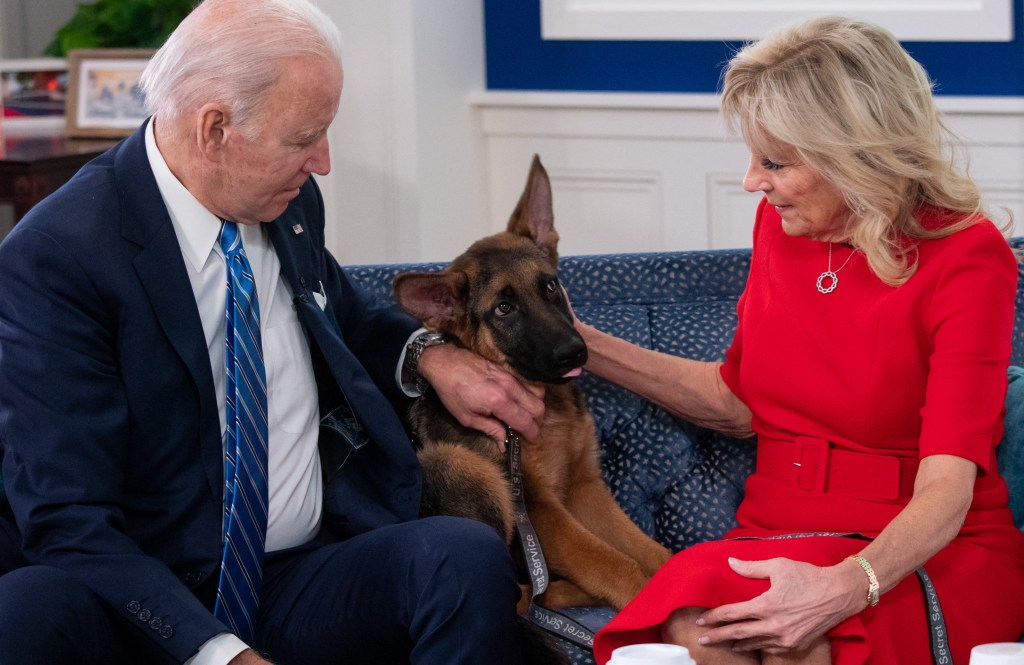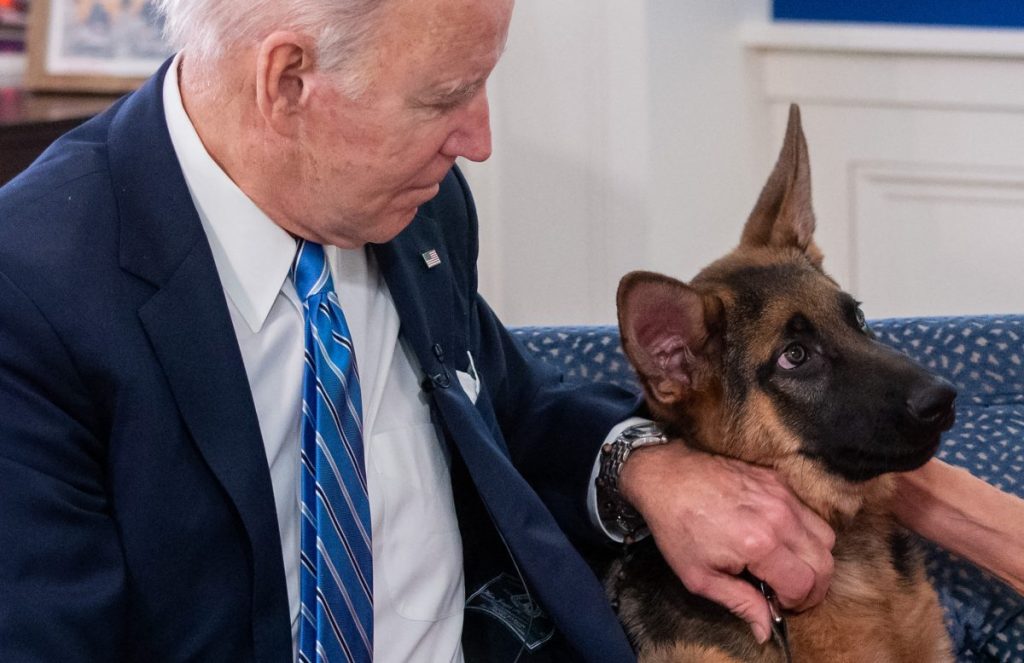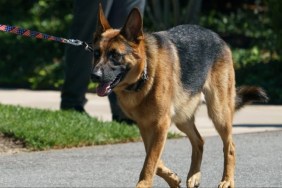President Joe Biden is under scrutiny after his dog, Commander, recently bit a US Secret Service agent at the White House. The 2-year-old German Shepherd has a history of biting. According to CNN, this is the 11th known biting incident involving Commander.
Joe Biden’s dog bites Secret Service Agent
Around 8 p.m. on Monday, Commander bit a Secret Service Uniformed Division police officer. The officer received treatment from a medical professional on site, the USSS chief of communications Anthony Guglielmi told CNN in a statement.
The officer is “doing OK,” according to Secret Service Uniformed Division Chief Alfonso M. Dyson Sr.
Unfortunately, this kind of behavior isn’t unusual for Commander. The dog has a history of biting people at both the White House and in Delaware. One incident resulted in the hospitalization of an officer after Commander “clamped down” on their arms and thighs, CNN reports.
Biden’s dog received training
Back in July, after one such biting incident, White House officials told the public that Commander was receiving training and learning leashing protocols.
However, in a vague response to the increasingly concerning situation, Elizabeth Alexander, communications director for the first lady, said in a statement that “the First Family continues to work on ways to help Commander handle the often unpredictable nature of the White House grounds.”
Ironically, Commander arrived at the White House in 2021 after the Bidens’ other German Shepherd, Major, was also involved in biting incidents.
Biting is a ‘workplace safety issue’ for White House employees
Secret Service agents do not handle the Bidens’ dogs, but they often come into contact with first family pets.
“This isn’t a Secret Service thing. This is a this is a workplace safety issue,” former USSS agent Jonathan Wackrow told CNN.
He continued: “There’s uniqueness here where it’s the residence of the president of the United States, but it’s also the workplace for hundreds, thousands of people. And you can’t bring a hazard into the workplace. And that’s what is essentially happening with this dog. One time you can say it’s an accident, but now multiple incidents, it’s a serious issue.”
While it surely isn’t Biden’s fault that his dogs have biting issues, it is his responsibility as a pet parent to prevent future incidents.
As Wackrow told CNN, “I’m sure that the Bidens love the dog. I’m sure that it’s a member of the family like every dog is, but you’re creating a significant hazard to those who support you – support the office of the president.”
What Biden needs to do about Commander

Biden has an opportunity to demonstrate responsible dog parenthood. Here’s what he needs to do regarding Commander:
Immediately remove Commander from triggering situations
Biden should promptly remove Commander from any situation or environment where the dog may become aggressive. If certain people, places, or activities consistently trigger the dog’s aggression, it is crucial to avoid these situations whenever possible.
Limit interactions
In cases where a dog is in a high-stress environment, such as the White House, it may be advisable to limit the dog’s interactions with employees or visitors who may provoke aggressive behavior. The safety of both the dog and those around it should always be a top priority.
Work with dog experts
Biden should work closely with professionals to assess the dog’s behavior and determine whether it is suitable to continue living in its current environment. If necessary, rehoming the dog to a more suitable and less stressful setting may be the best course of action to ensure the safety and well-being of everyone involved.
Be a role model
Public figures should set a responsible example when it comes to dog parenthood, prioritizing the safety of their pets and those they interact with. This may involve making difficult decisions for the sake of everyone’s safety.
How to address biting in dogs

Having a dog that bites can be distressing for both the dog parent and their pup. Here’s how a responsible pet parent should respond to a dog that bites:
Educate yourself about dog behavior
Biting is often a sign of distress, fear, or frustration. The more you understand the reasons behind dog biting, the more effective your response will be.
Seek professional help
If your dog has a biting issue, consult a professional dog trainer or a certified behaviorist. They can assess the dog’s behavior, identify triggers, and create a customized training plan.
Start obedience training
Training commands like “sit,” “stay,” and “leave it” can help manage a dog’s behavior and reduce aggression.
Encourage socialization
Dogs that are well-socialized from a young age tend to exhibit fewer aggressive behaviors. Expose your pets to various people, animals, and situations to build confidence.
Identify triggers
Identify specific triggers that lead to biting incidents. These could include situations, people, or even physical discomfort. Avoiding or managing these triggers can be key to preventing biting.
Use positive reinforcement
Use positive reinforcement techniques, such as rewarding good behavior with treats or praise. This can help reinforce desirable actions and discourage negative ones.
Consider behavior modification techniques
Behavior modification techniques may be necessary in cases of severe aggression. This can involve desensitization and counter-conditioning exercises to change a dog’s response to certain stimuli.
Obey the law
It is crucial for dog parents to know and abide by local laws and regulations regarding dog behavior, especially involving aggression. Some jurisdictions may require certain actions, such as muzzling or restraint, if a dog has a history of biting.
Visit the vet
Consult your veterinarian to rule out any underlying medical issues that could be contributing to aggressive behavior. Pain or discomfort can sometimes trigger aggression.
Supervise your dog
If your dog has a history of biting, always supervise them especially around children or vulnerable individuals. Use a leash and secure your yard with a fence to help prevent accidents.
Be consistent and patient
Dog training takes time and patience. Consistency in training methods and routines is essential for long-term success.









